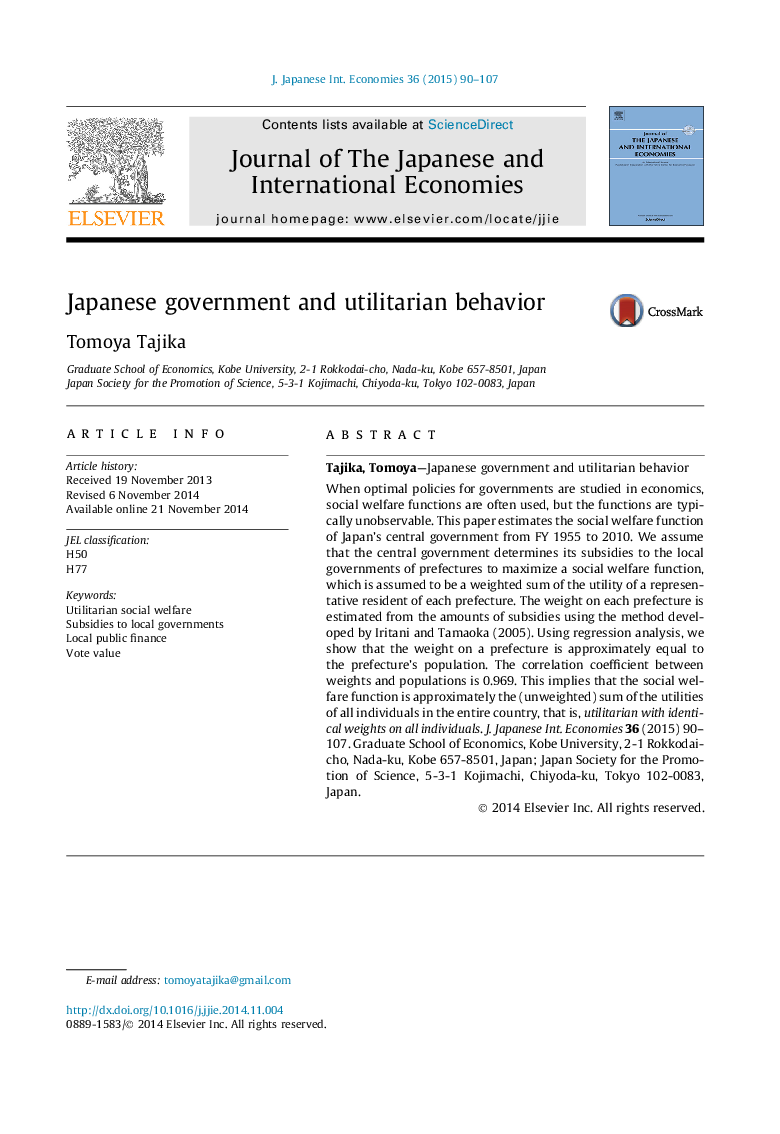| Article ID | Journal | Published Year | Pages | File Type |
|---|---|---|---|---|
| 965087 | Journal of the Japanese and International Economies | 2015 | 18 Pages |
Abstract
When optimal policies for governments are studied in economics, social welfare functions are often used, but the functions are typically unobservable. This paper estimates the social welfare function of Japan's central government from FY 1955 to 2010. We assume that the central government determines its subsidies to the local governments of prefectures to maximize a social welfare function, which is assumed to be a weighted sum of the utility of a representative resident of each prefecture. The weight on each prefecture is estimated from the amounts of subsidies using the method developed by Iritani and Tamaoka (2005). Using regression analysis, we show that the weight on a prefecture is approximately equal to the prefecture's population. The correlation coefficient between weights and populations is 0.969. This implies that the social welfare function is approximately the (unweighted) sum of the utilities of all individuals in the entire country, that is, utilitarian with identical weights on all individuals.
Keywords
Related Topics
Social Sciences and Humanities
Economics, Econometrics and Finance
Economics and Econometrics
Authors
Tomoya Tajika,
